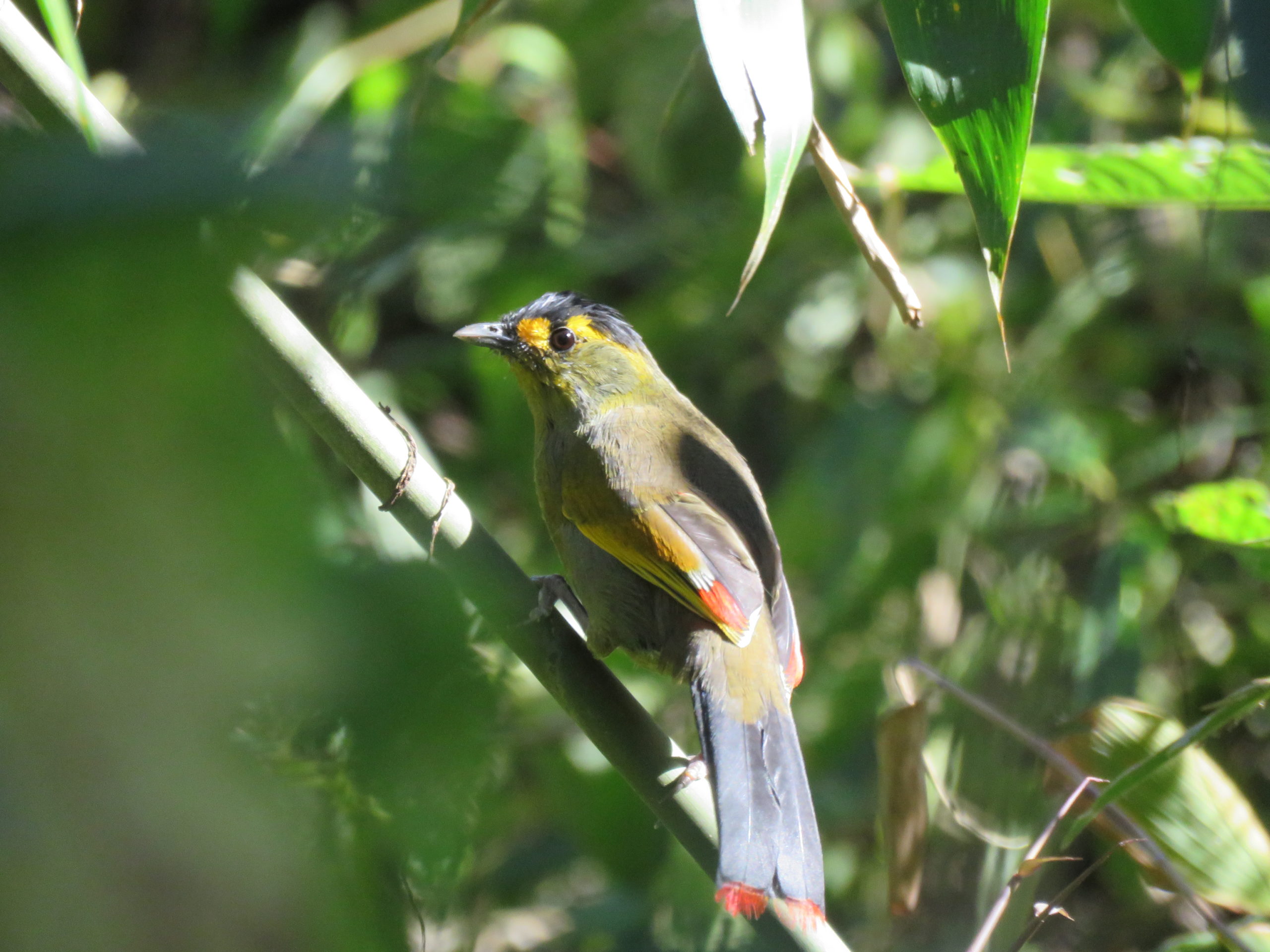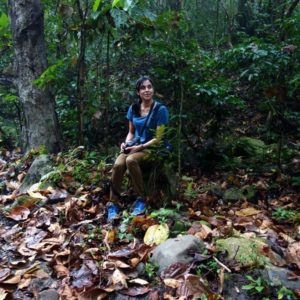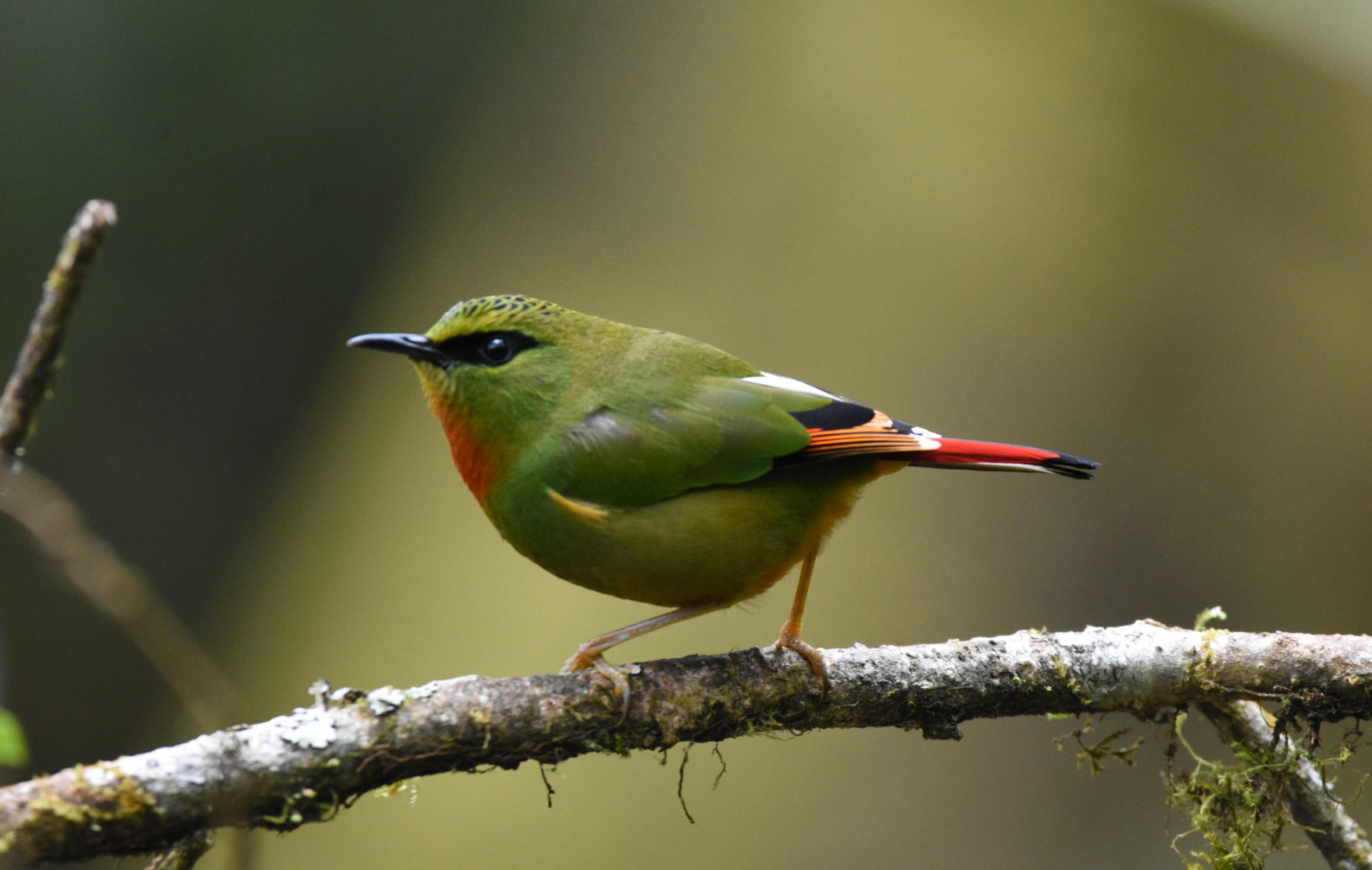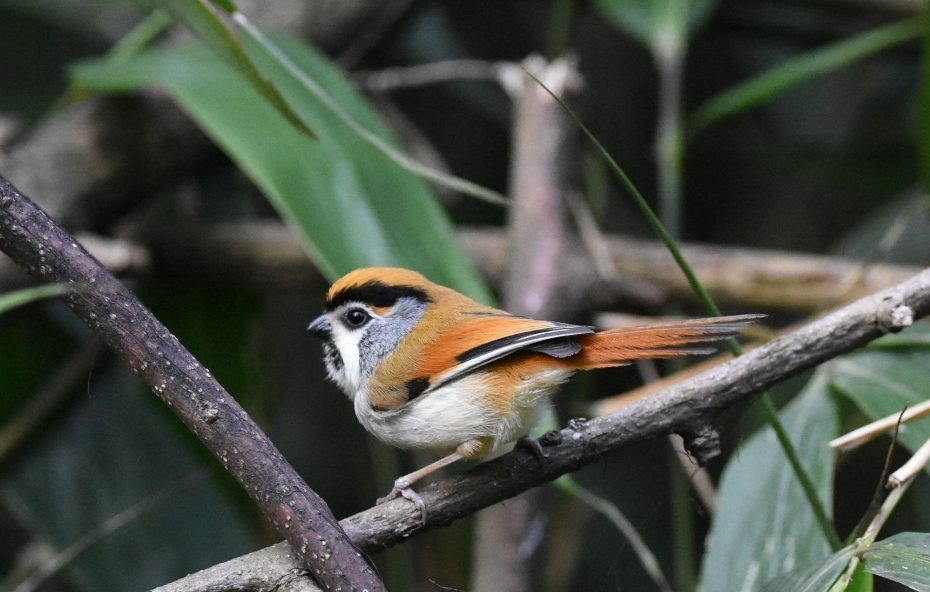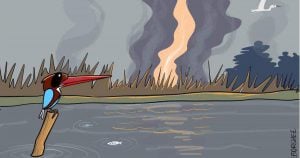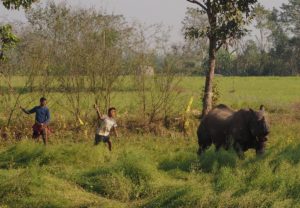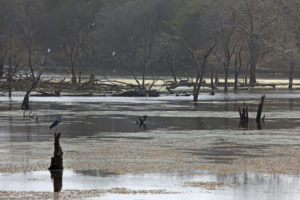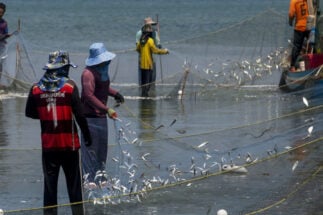Get the whole picture
This is one in a series of articles exploring some of the ways communities and governments in Asia are responding to the biodiversity crisis. You can view the whole series here.
In a remote part of the Eastern Himalayas, entire livelihoods are largely centred around the Bugun liocichla, a small hyperactive bird that was unknown to international science before 2006. Its green plumage enlivened by flashes of yellow and crimson, the Bugun liocichla tops the wish lists of birders who travel every year from across the world to the Eaglenest area of Arunachal Pradesh, northeastern India
Only scientifically described in 2006 by Professor Ramana Athreya, the Bugun liocichla was the most significant avian discovery in India since the founding of the republic. Athreya named the species in honour of the Bugun tribe who live in the area, and whose cultural practices, including hunting taboos, have ensured the survival of the area’s priceless biodiversity.
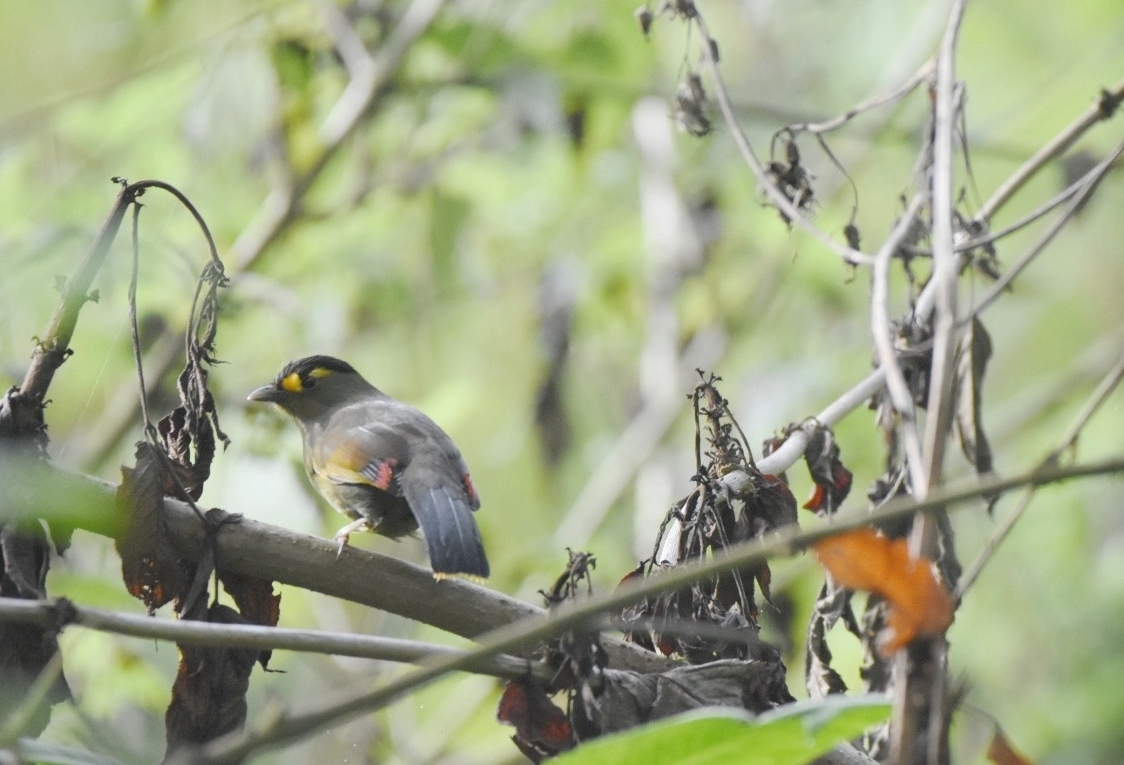
The discovery of the Bugun liocichla in an area close to Eaglenest Wildlife Sanctuary – so far the only place in the world it has been found – made the spot a must-visit for birders from across India and beyond, with a supporting cast of captivating species such as the Blyth’s tragopan, Ward’s trogon, beautiful nuthatch and fire-tailed myzornis. This area of northeastern India may have the second-highest biodiversity in the world, second only to the northern Andes, as well as the world’s highest density of threatened bird species.
As the Bugun liocichla was initially found outside the boundaries of the existing Eaglenest Wildlife Sanctuary, the Buguns worked with the Arunachal Pradesh Forest Department and researchers to formally protect the home of the critically endangered species, whose total global population is estimated to be as low as 50. In 2017, the 17 square kilometre Singchung Bugun Village Community Reserve was formally declared, encompassing all the known breeding areas of this species.

In India, a community reserve (declared under India’s Wildlife Protection Act) typically acts as a buffer zone next to a government-owned protected area (in this case Eaglenest Wildlife Sanctuary) and is intended as an extension of the protected area in which human resource use is balanced with the needs of wildlife.

According to a 10-year management plan approved in 2019, the Arunachal Pradesh Forest Department funds an annual budget for protection of the community reserve, including 10 staff from the area, while entry fees collected from tourists were to be used to support rations for forest patrols and the operation of a management committee comprised of Bugun residents, researchers and representatives from the forest department. Around 200 foreign tourists visited the area annually in recent years and made up the bulk of clients for local bird guides.
A baseline survey conducted during the creation of the management plan showed that 92% of respondents from around the area felt the community reserve was a good way to protect the forests for future generations, while 84% felt it would help to preserve their culture.


A heavy blow to ecotourism
Then came Covid-19 and lockdown in March 2020. Foreign tourists have been absent ever since, while domestic tourist numbers have been down by 95%. From August 2020 onwards, after the first lockdown ended, domestic tourists started to trickle in, up until the second wave hit in spring 2021.
Dombe Pradhan, who has worked as a freelance bird guide in the Eaglenest area for the past six years, told The Third Pole that he has earned less than 20% of his annual pre-pandemic earnings. “Nobody thought that something like this would happen,” he said. Four groups cancelled bookings with him in April 2021 due to an increase in the number of cases in the cities that they were traveling from.

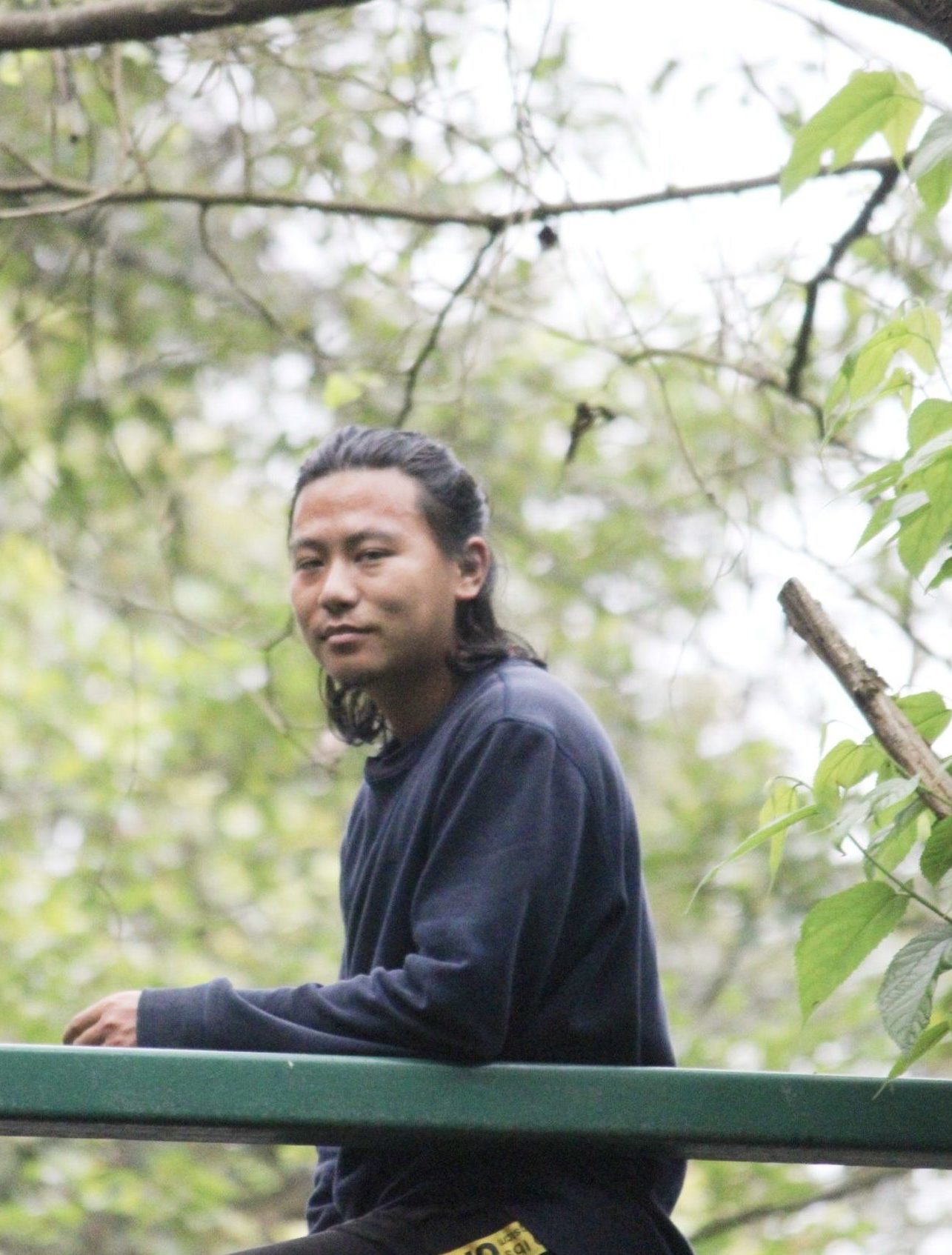
“We still have to keep hope that after Covid, tourists will return in greater numbers,” said Tenzing Glow, whose father Indi Glow was one of the pioneers of bird tourism in the area. The Glows own two tourist camps from which they operate birding tours, employing people from nearby villages.
The decrease in tourist numbers has translated into a loss of one million rupees (USD 13,410) for his business. At the time of writing, they are still unable to pay the full salaries of their five current employees, down from 10-12 people who were permanently employed before the pandemic. “We are giving as much as we can and our staff have been understanding,” he said.
After leading 12-14 birding groups between October and May, Dombe Pradhan would usually spend the rainy season birding alone in other areas of northeastern India, sharpening his bird-identification skills and providing an opportunity to network with tour operators. But this year, he has been helping his family on their farm to ensure they can earn enough to eat. “We can’t do anything else because of Covid,” Pradhan said. During the first wave of Covid-19 in 2020, a tour operator in Dirang, 60km away, sent provisions to help some of the area’s bird guides and their families.
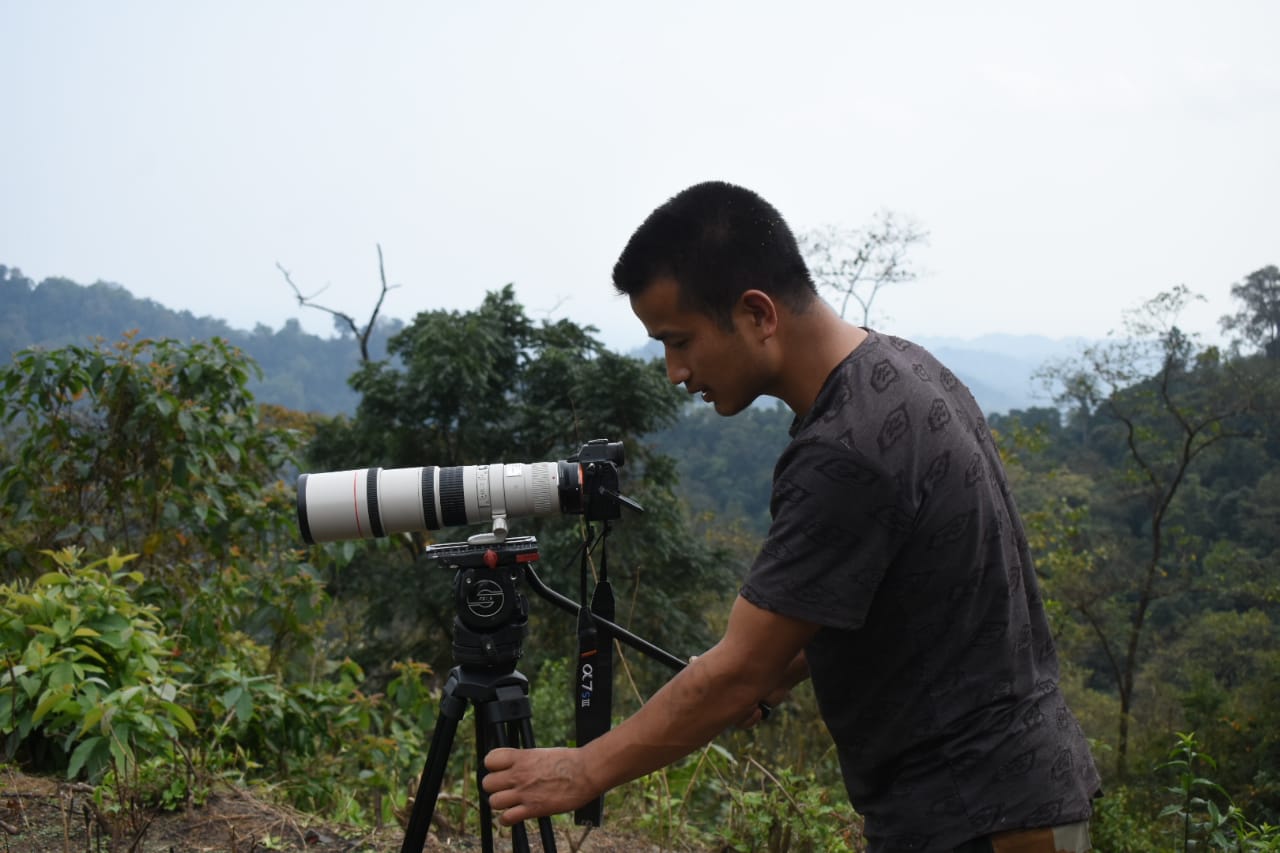
Micah Rai, a 28-year-old bird guide and research assistant who lives next to Singchung Bugun Village Community Reserve, said that living next to the forest had advantages during the pandemic, and that many families from the Tenga valley would agree, “Wild ferns helped us live.” Rai said that most of the species harvested, such as the edible vegetable fern, are fairly common with no discernible effects of over-harvesting noticed so far.
Resurgent wildlife and resilient forest protectors
Bird guides have reported an increase in sightings of usually shy species during the lockdown, thanks to fewer tourists and minimal use of playback (playing recordings of bird calls so the bird responds and is easier to see). Blyth’s tragopan, a threatened pheasant species, has been frequently seen by the road that passes through the protected area, said Micah Rai. “[We had] so many species sightings when everything was closed,” said Rai.
Meanwhile, Rai, Tenzing and Dombe all reported that the Bugun liocichla has been frequently spotted behind the tourist camp toilets within the community reserve without using playback. Rai has even spotted the rarely seen Asian golden cat. More troublesome were the group of elephants who last October damaged the dining area at Lama camp, owned by Tenzing Glow and his father and the best place in the world to see the Bugun liocichla.
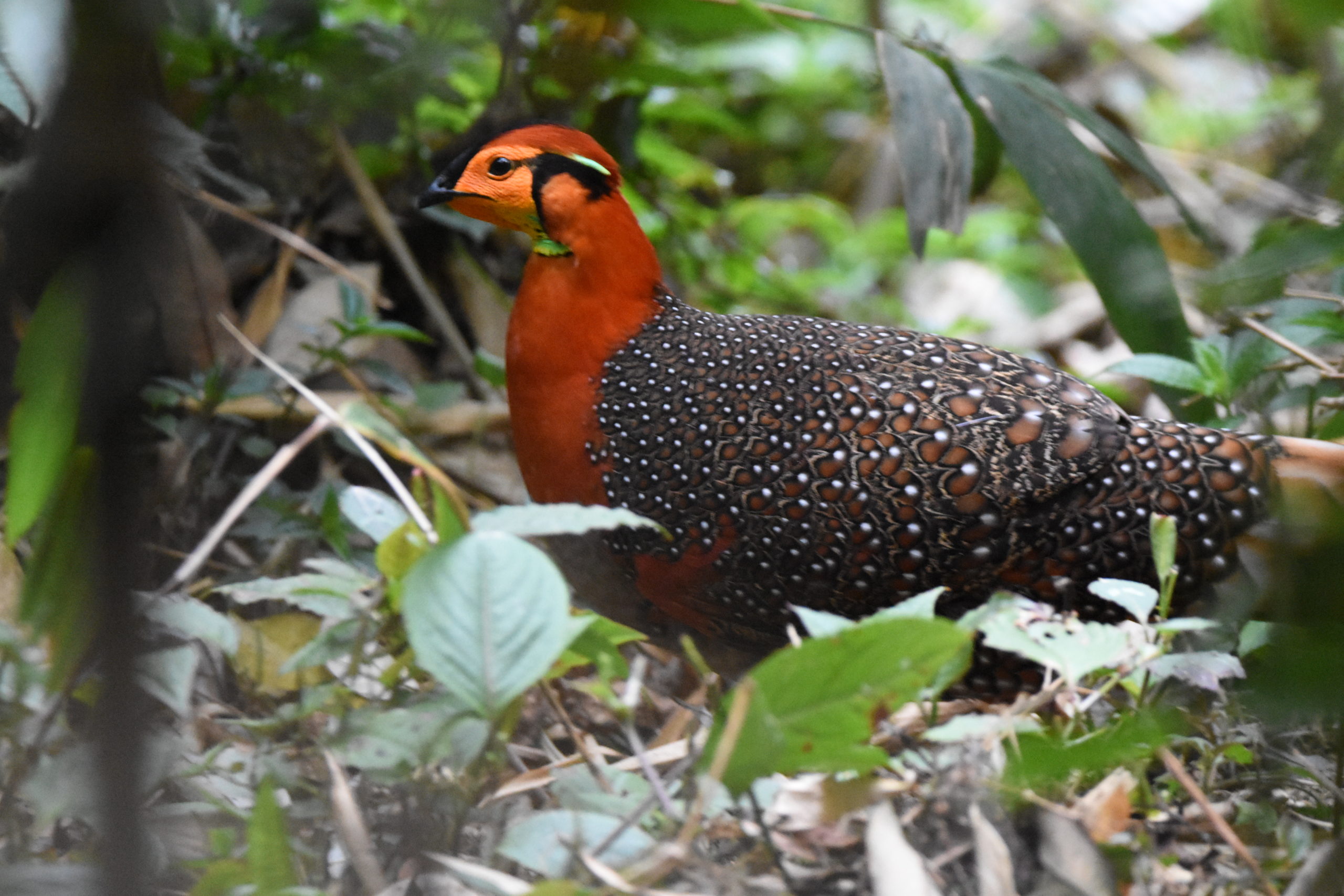
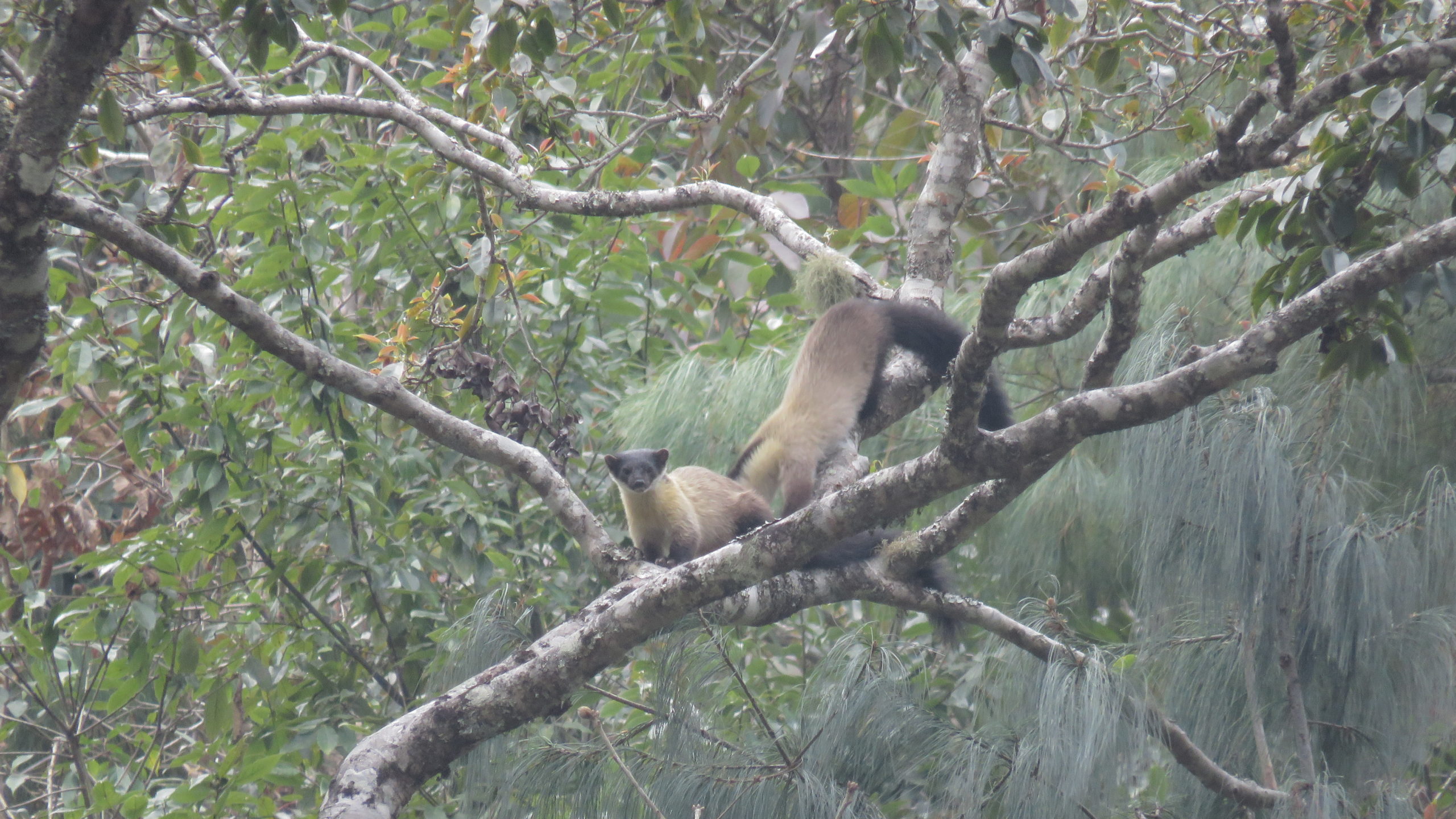
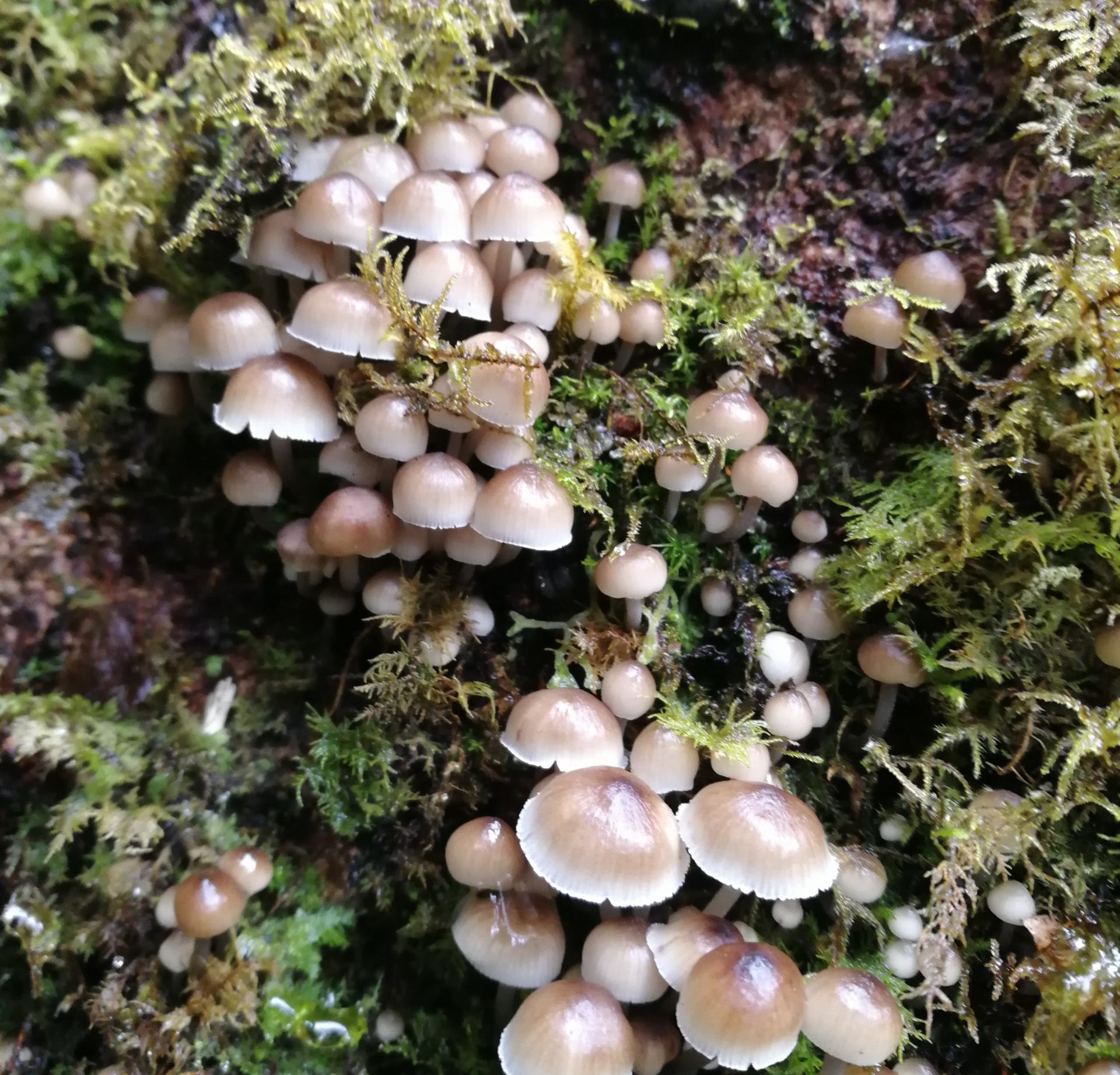
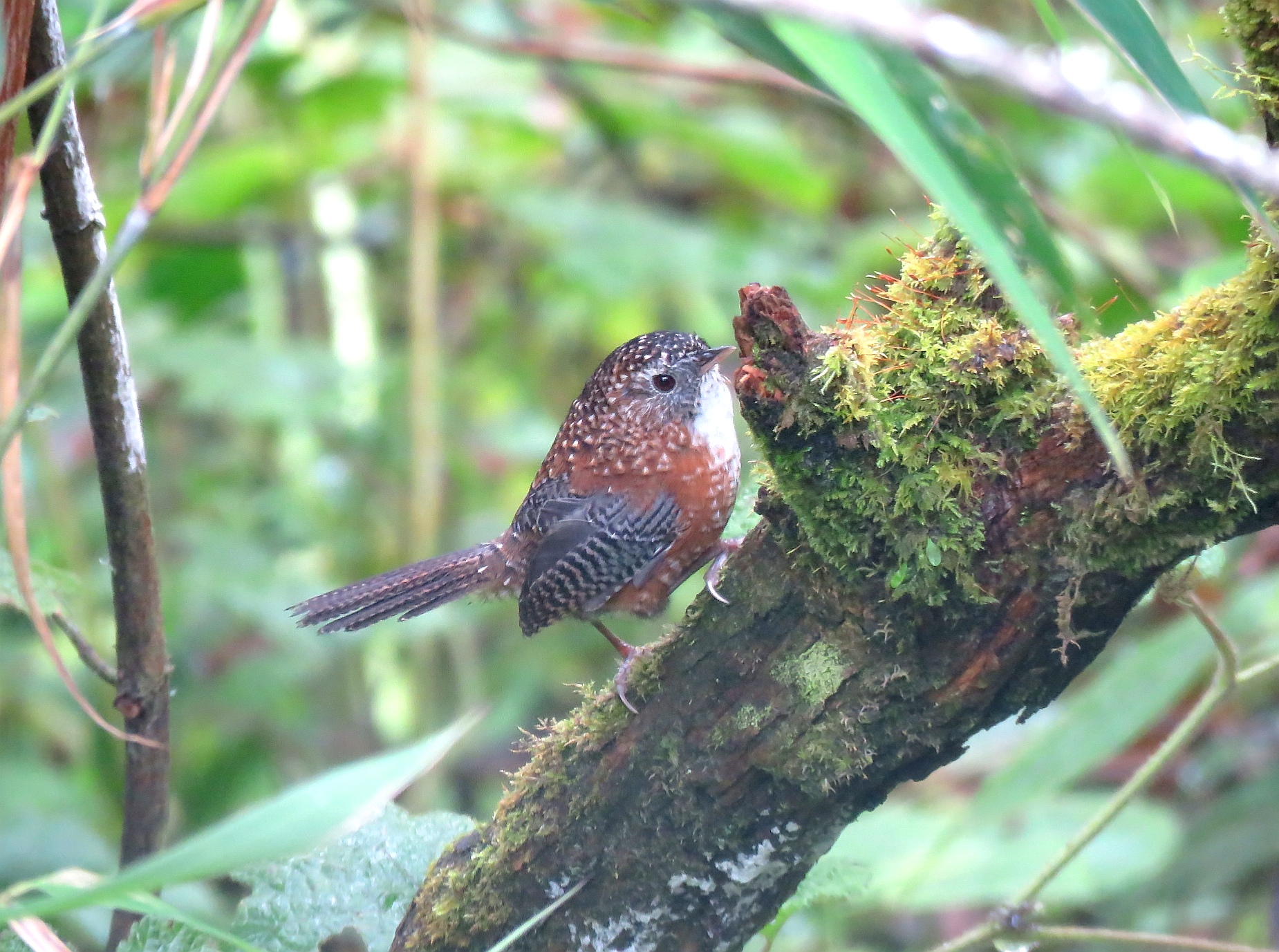
Shaleena Phinya, a Bugun filmmaker and front-line antipoaching forest staff member in the community reserve, told The Third Pole that the forest department and 10 front-line staff from the Bugun community have been doing all they can to protect the forests throughout the pandemic, especially during the first wave when local people found themselves with more time for recreational hunting. She has started her own vegetable garden given that provisions are hard to come by. “The unity of our team increases when we hear about hunting,” Phinya said.
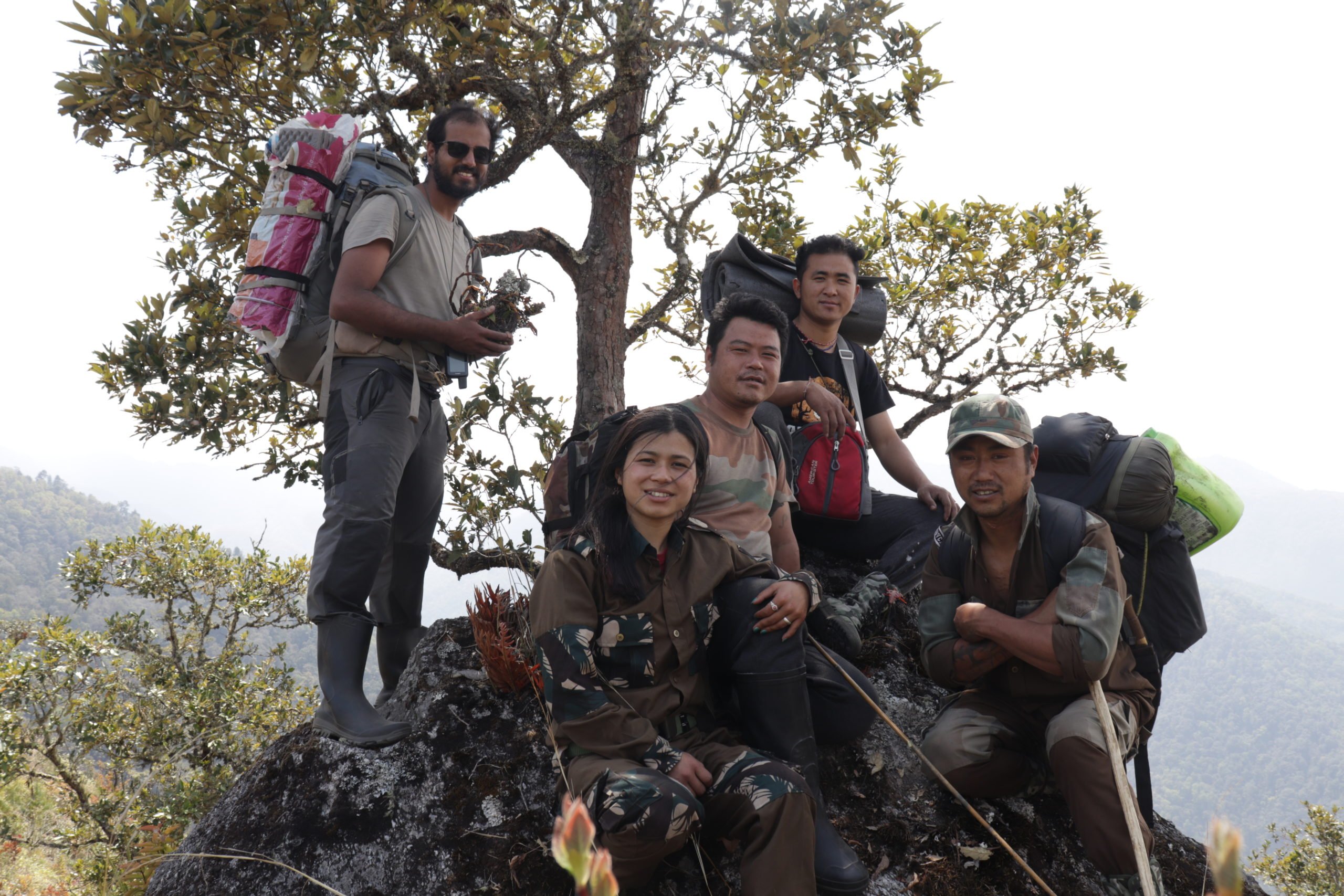
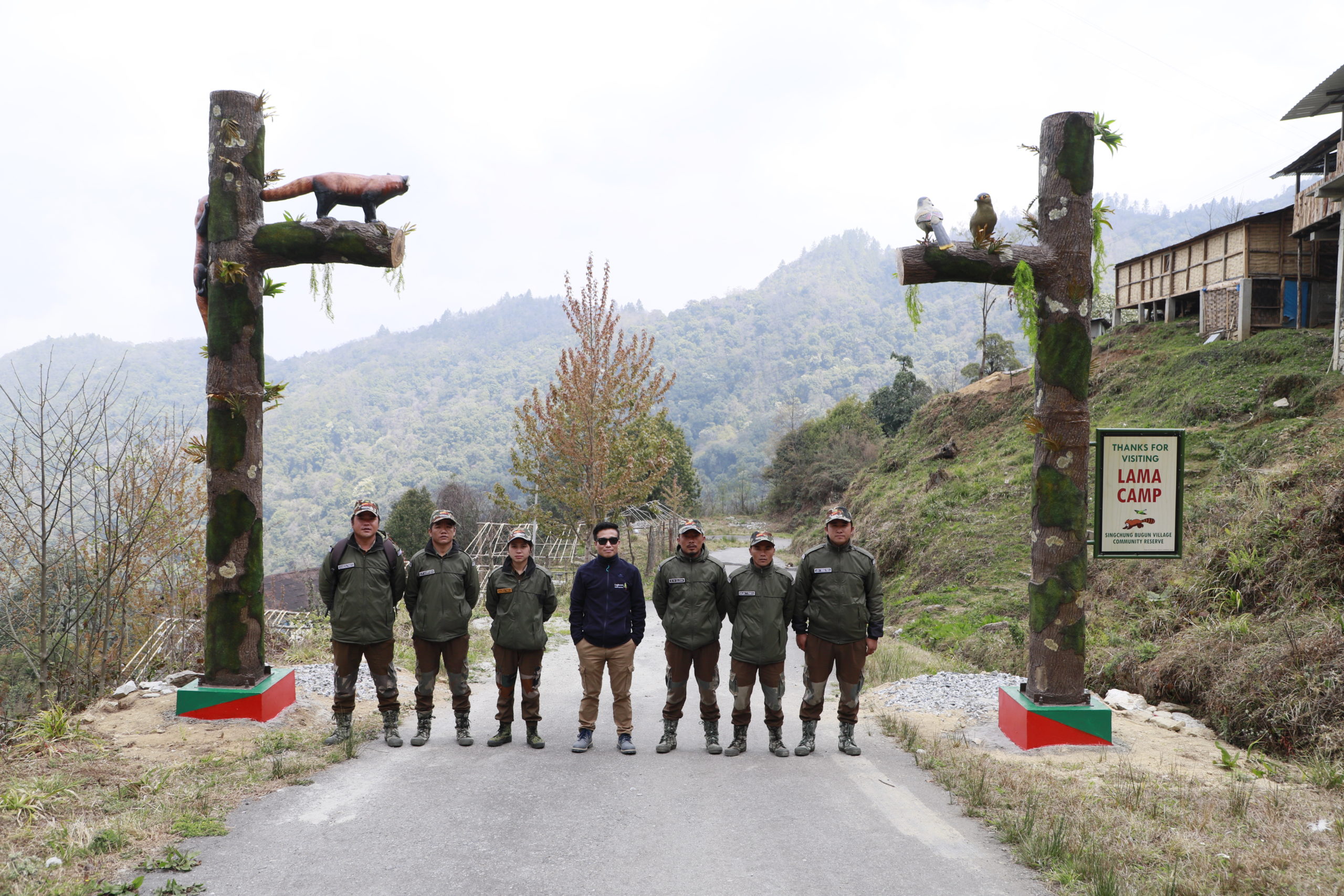
The front-line community reserve staff received their first vaccines in late June, and are balancing patrolling with ‘Covid duty’, which includes working with the village council and district administration to ensure mini-lockdowns are implemented when positive cases are reported. “When we get into Covid duty we understand each other,” said Phinya, adding that they have formed a tag-team system to ensure they can both patrol the forest and help with Covid management.
However, Eaglenest Wildlife Sanctuary and the Singchung Bugun Village Community Reserve are only a small piece (217 sq km) of the 3,500 square kilometre Kameng Protected Area Complex, which is spread across two states and five protected areas, and is threatened to varying degrees. The lower areas of the protected area complex continue to be threatened by illegal logging and increased hunting following the construction of an access road to the boundary of Eaglenest in September 2020. Around the same area, just outside Eaglenest Wildlife Sanctuary, a critically endangered Chinese pangolin was sighted in April 2021 outside a burrow that showed signs of fire, which is used to smoke out pangolins, the world’s most heavily trafficked mammal.
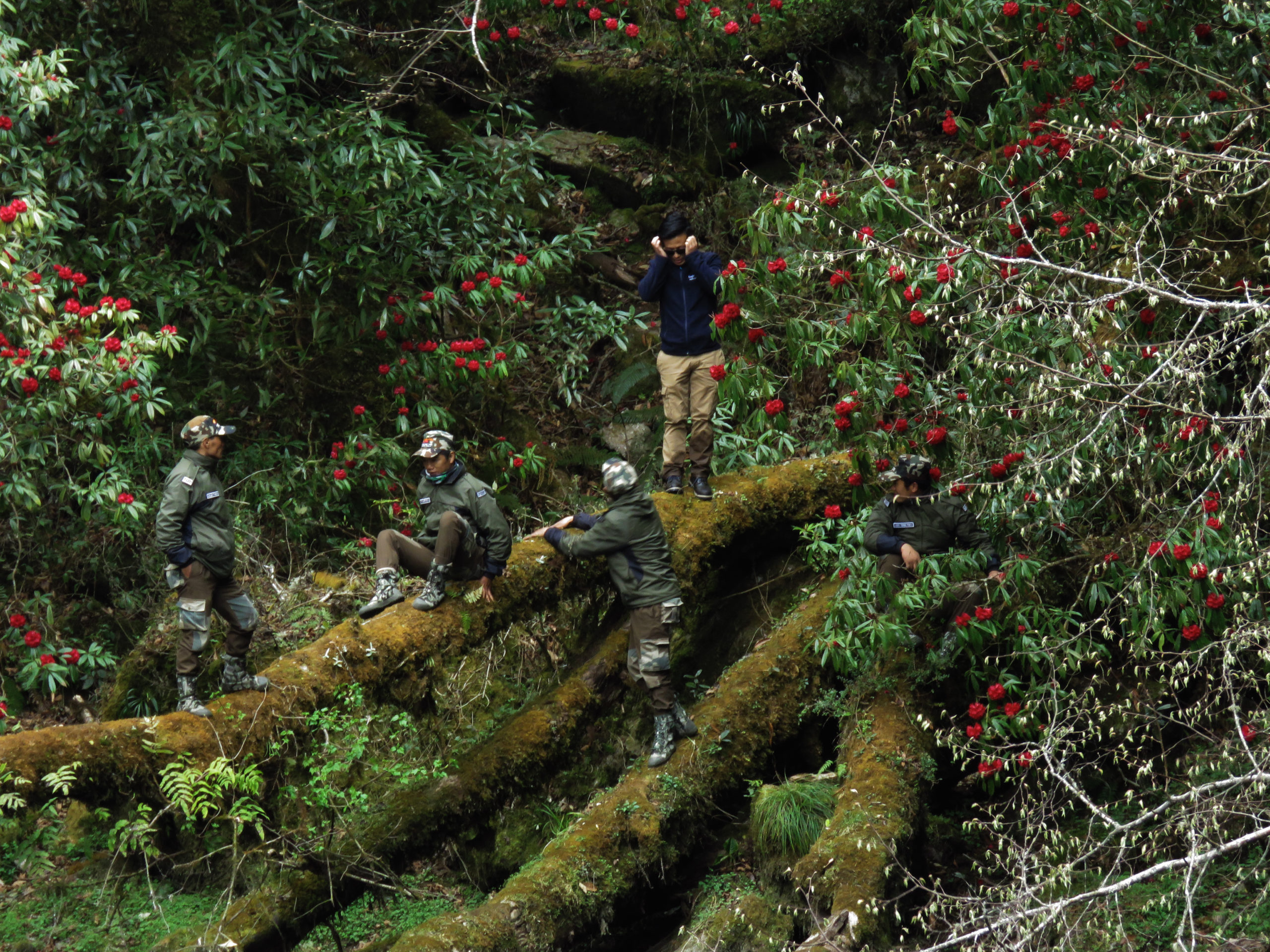

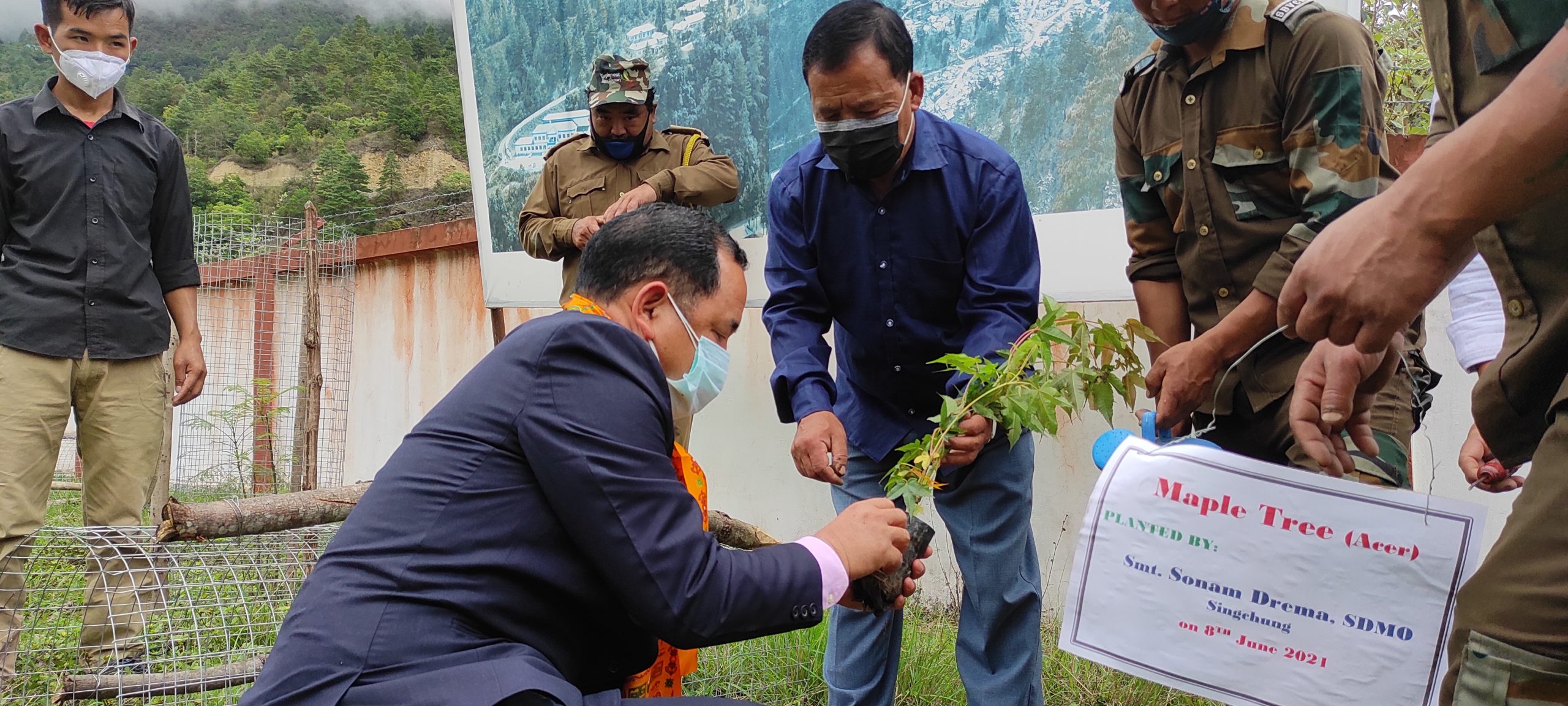
Government relief slow for tourism sector
A financial relief package for India’s tourism sector was announced in late June 2021, almost a year and half after the start of the pandemic. Nobody interviewed for this story knew what the tourism relief package meant for nature-based tourism in the area. In terms of on-the-ground protection, there have been no major delays in paying the community reserve staff their salaries, but this was not the case for other protected areas in Arunachal Pradesh: only 80% of sanctioned funds were released due to the demands of dealing with Covid-19. This financial year may bring new uncertainties, as funds will be released in four smaller instalments instead of one.
Dombe says he has to remain hopeful, and that domestic tourists still call him to say that once things open up, they will run to the area. But for now, with the second wave ongoing, the Bugun community has called for a total lockdown, in place since 2 May. Time will tell whether they can restart the tourism season this October.
